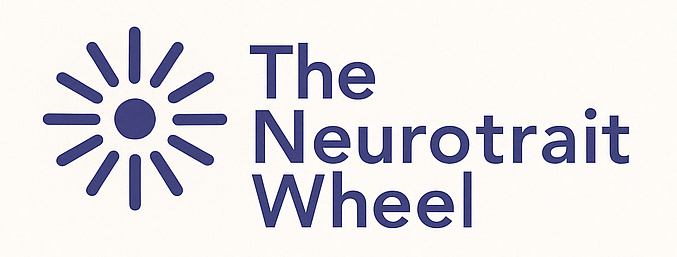What is the
Neurotrait Wheel?
The Neurotrait Wheel is a simple visual tool that helps people understand and talk about neurodivergent experiences.
It’s not a diagnosis tool or a medical model, it’s a conversation starter designed to help people reflect, share, and better support each other.
How it works
Each trait is rated by the person using the wheel – usually from 0 (not present) to 10 (a big part of daily life).
When all the ratings are joined up, they create a shape: your Neurotrait Graph. Some traits are more of a feature in your life, others less so.
Why we made it
Many people find it hard to explain what being neurodivergent feels like. Diagnosis doesn’t always tell the full story, and no two people experience things in the same way, even with the same label. And added to that, many people have multiple, overlapping diagnoses.
The Neurotrait wheel is a chance to look past labels and view our brains as a whole.
Why it's different
Most models are based on specific diagnoses and isolated symptoms, but real life doesn’t work like that.
The Neurotrait Wheel looks at neurodivergence as a whole, on a spectrum across multiple traits. It’s designed to reflect lived experience – how traits combine, vary, and show up differently in different people, even with the same diagnosis.
By mapping traits radially instead of linearly, it avoids thinking in terms of “more” or “less” neurodivergent and focuses on individual experiences.
It also helps explain why many people experience overlapping traits from multiple conditions, and why some neurotypical people relate to isolated traits without actually being neurodivergent. That’s the value of looking at the shape, not just the label.
What the wheel shows
Your shape is a snapshot, not a fixed identity.
It shows:
- Which traits are most present or impactful for you
- Where your strengths and struggles might sit
- Why your experience may differ from others with similar labels
- How your needs and preferences might show up at work, in learning, or in relationships
Every graph is unique – and that’s the point.
How it's used
The Neurotrait Wheel is a framework and a tool that can be used in a lot of ways. You might like to use it to:
- Reflect on your own patterns and understand yourself better
- Share your graph with others to explain how you experience the world
- Start conversations at work, school or home
- Support others by recognising that traits vary across individuals
- Think about accommodations in a more tailored, person-first way
You might find yourself saying, “I didn’t realise how much sensory stuff impacts me until I saw it mapped out”. Or, “This helps explain why I struggle with planning but thrive in creative sprints.”.
How this relates to a diagnosis
This tool can work alongside or separately from a diagnosis – but remember that this is a way to explain experiences, not a tool for diagnosis itself.
There will be pattern similarities between people with the same diagnosis. For example, most people with ADHD will score fairly highly on distractability, and most people with Autism will score more highly on a need for predictability. However, it’s been shown that a majority of Neurodivergent people have more than one diagnosis, and each diagnosis looks a little different.
This model helps to look past labels by viewing the Neurodivergent experience as a whole.
What it’s not
- This isn’t a diagnostic tool.
- It’s not scientific, and it doesn’t replace professional advice.
- It’s not about labels or fitting into a box.
The Neurotrait Wheel is simply a way to explore and communicate experiences that are often invisible or misunderstood – and to help others understand them, too.
